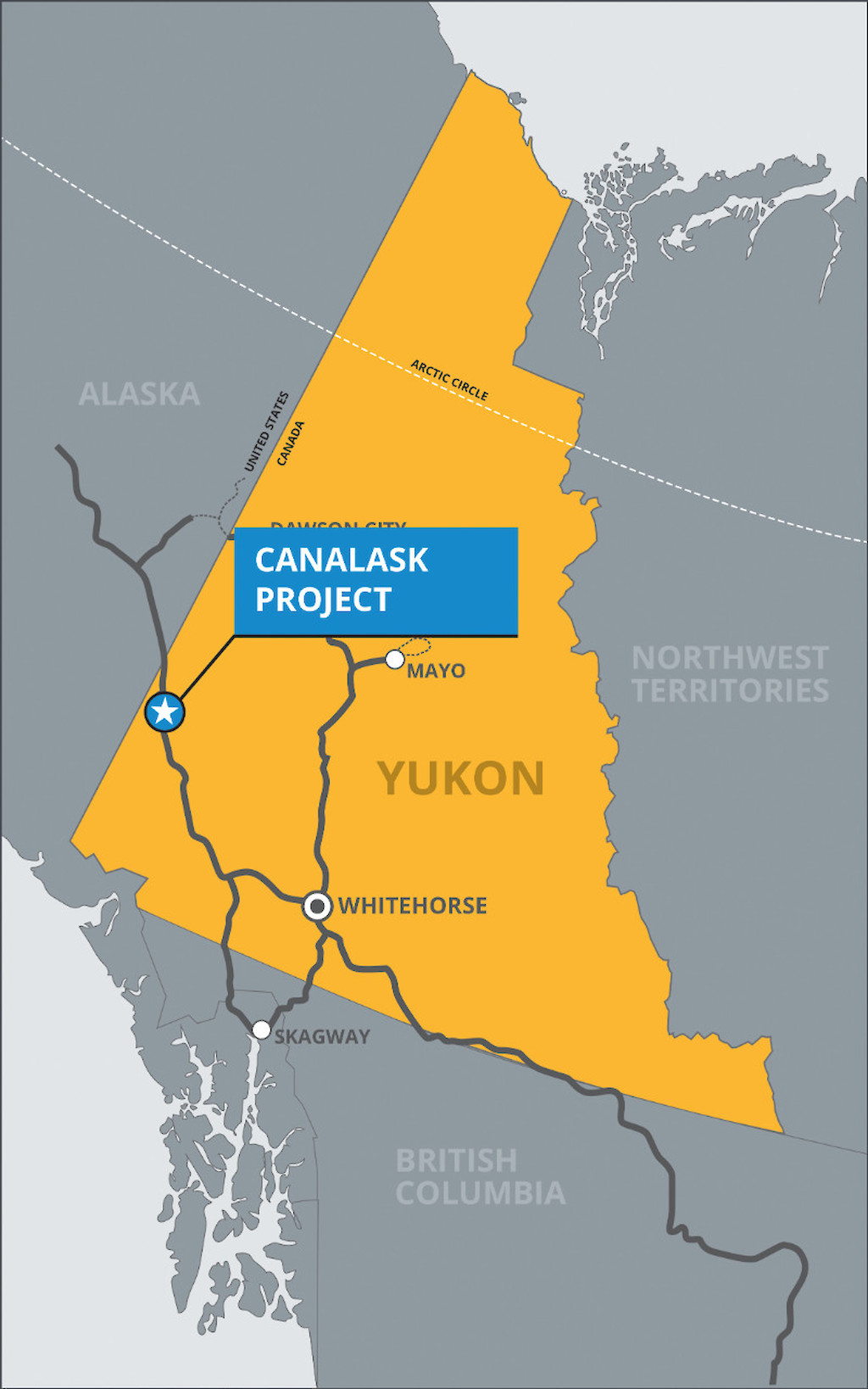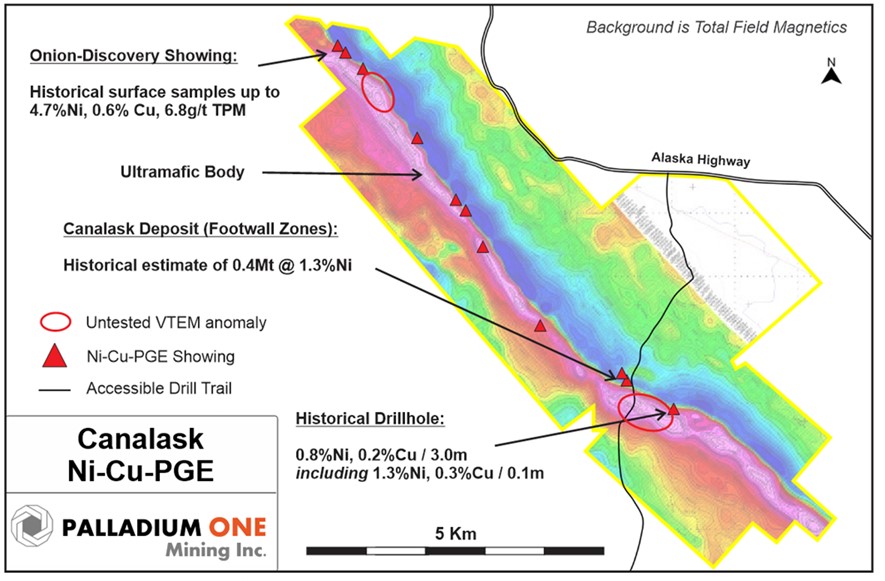Canalask Property: Nickel-Copper-PGE
Yukon
Property Location
The Canalask Property is located in the Whitehorse Mining District, approximately 320 km west of Whitehorse and is accessible from the Alaska Highway near Beaver Creek, Yukon. The Canalask property consists of a contiguous block of 179 quartz claims covering an area of approximately 3,400 hectares.
Palladium One recognizes that the area explored represents a small portion of what is clearly an extensive and highly prospective system capable of hosting a major deposit. Canalask complements the massive sulphide Tyko Project in Ontario, where exploration drilling is currently underway.
Project Highlights
- Numerous high-grade showings
- Strong potential for massive nickel sulphide mineralization
- Hosts both magmatic Norilsk “feeder type” mineralization and epigenic “footwall-type” deposit
- Drill ready targets
- Historic Mineral Resource Estimate, 400,000 tonnes at 1.35% nickel
- Excellent access from adjoining Alaska Highway
- Proximal to multiple communities


Geology and Mineralization
The Canalask Property covers the lateral extent of the northwest – southeast striking, steeply dipping “White River Intrusive Complex” (WRIC), which is part of the larger Kluane Mafic-Ultramafic Belt. The Kluane belt extends from northern British Columbia to east-central Alaska, within the Pennsylvanian to Triassic Wrangellia Terrane volcanics and sediments. The belt is host to numerous nickel-copper +/- platinum-palladium deposits and prospects, most notably the past producing Wellgreen Deposit, now held by Nickel Creek Platinum Corp., approximately 110 kilometers to the south. The WRIC occurs as a sill-like body of ultramafic and mafic rocks 100 to 150 meters thick and dipping approximately 50 degrees to the southwest. The northern margin of the WRIC represents the basal footwall contact zone while the southern margin delineates the upper hanging wall intrusive contact. The intrusion itself is dominantly composed of peridotite and dunite with a mineralized basal gabbro zone.
The WRIC is a favourable setting for magmatic nickel-copper sulphide mineralization as it is considered a “feeder system” with a high volume of magma flow. As evidenced by the abundance of magmatic Ni-Cu-PGE showings at the base of the WRIC and the discovery of the Ni-rich Canalask footwall deposit, the project hosts strong potential for both “magmatic feeder-type” basal deposits and “epigenetic footwall-type” footwall deposits. The geological setting draws comparison to the world-class Norilsk Ni-Cu-PGE camp.
Historical Exploration
Exploration on the project dates to the 1950’s when the Canalask footwall zone was originally discovered, drilled and partially developed. A Historical resource estimate on the Main Zone is quoted at 400,000 tonnes at 1.35% Nickel by Discovery Mines Ltd. in 1968 (Yukon Assessment Report 094599). Early Metallurgical floatation test work returned concentrate grades as high as 19.7% Nickel (Yukon Assessment Report 093256). Exploration continued on the project up to the early 2000’s through a series of surface programs including geochemical surveys, geological mapping and geophysics. During these campaigns numerous high-grade Ni-Cu-PGE showings, such 4.7% Nickel, 0.6% Cu and 6.82 g/t PGE in grade samples at the Discovery zone (Yukon Assessment Report 094599), were discovered along the length of the ultramafic-mafic body. In 2006 Xstrata completed a NI-43-101 Technical Report (Yukon Assessment Report 094599) on the project. Readers are cautioned that the Company has not verified the Historical Mineral Resource Estimate and therefore the data should not be relied upon.
Qualified Person
The technical information on this page has been reviewed and verified by Neil Pettigrew, M.Sc., P. Geo., Vice President of Exploration and a director of the Company and a Qualified Person as defined by National Instrument 43-101.
